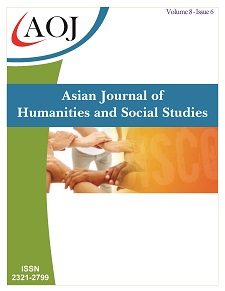Communication Strategy of National Movement Program of Vulnerable Worker Protection through the Distribution of CSR Donations by Social Security Administration Body (BPJS) for Employment
DOI:
https://doi.org/10.24203/ajhss.v8i6.6381Abstract
The title of this is study is the identification of the management strategy of the national movement program concerned about the protection of vulnerable worker or called GN LINGKARAN through the distribution of CSR donations by BPJS for Employment. The concepts and theories that supported this research were the concepts of corporate social responsibility (CSR) public relations (PR), and public relations communication. This study used qualitative method with single case study design. The results showed that technically, GN LINGKARAN CSR program strategies were 1) adjusting all the CSR initiatives with BPJAMSOSTEK governance, 2) collaborating with related institutions such as Ministries / Institutions, Local Governments, Entrepreneurs, Trade Unions, Donor institution, Banks, individuals and other relevant institutions / organizations, 3) optimizing the function of the mass media to publish the GN LINGKARAN CSR program. The types of media used include printed media and electronic media (television, radio and social media), 4) Technically GN LINGKARAN CSR program always organizes programs with efficient principles, namely through digital facilities and infrastructure. This implication facilitated the interaction between BPJAMSOSTEK and donors and also beneficiaries, namely vulnerable workers.
References
• Archie B. Carroll and Kareem M. Shabana. 2010. The Business Case for Corporate Social Responsibility: A Review of Concepts, Research and Practiceijm. International Journal of Management Reviews.
• Deegan, C. and Rankin, M. 1999. ‘The environmental reporting expectations gap: Australian evidence’, The British Accounting Review. 31 (3):313–346.
• Frynas, JG. 2009. Beyond Corporate Social Responsibility, Oil Multinationals and Social Challenges. Cambridge: Cambridge University Press.
• Gioia, D.A., Corley, K.G. and Hamilton, A.L. 2013. Seeking qualitative rigor in inductive research: Notes on the Gioia methodology. Organizational Research Methods, 16(1), 15-31.
• Haryati, Syerli. 2019. The Communication Process Analysis of Corporate Social Responsibility Program of Ancol Zero Waste. International Journal of Scientific and Research Publications. 9 (11): 604-608
• Hooghiemstra, R. 2000. ‘Corporate communication and impression management – new perspectives why companies engage in corporate social reporting’, Journal of Business Ethics. 27(1/2):55-68
• Purba, Gervin Nathaniel. 2019. Direktur Keuangan BPJS Ketenagakerjaan Raih Asia’s Top Sustainability Superwomen [Online. Accessed on https://www.bpjsketenagakerjaan.go.id/berita/25959/Direktur-Keuangan-BPJS-Ketenagakerjaan-Raih-Asia’s -Top-Sustainability-Superwomen
• Rachman, Efendi dan Wicaksana. 2011. Panduan Lengkap Perencanaan CSR. Jakarta: Penebar Swadaya.
• Rahman. 2018. The Implementation of the CSR Program as an Effort to Improve the Environmental Quality through the Empowerment of Scavengers. International Journal of Management Sciences and Business Research. 7 (8): 32-39
• Tehemar, Sherif A. Zaki, 2014. Communication in the CSR Context 1st edition. bookboon.com
• Crane In A. et al. (Eds.). 2008. The Oxford Handbook on Corporate Social Responsibility. Oxford: Oxford University Press.
Downloads
Published
Issue
Section
License
Copyright (c) 2020 Enjang Pera Irawan

This work is licensed under a Creative Commons Attribution-NonCommercial 4.0 International License.
- Papers must be submitted on the understanding that they have not been published elsewhere (except in the form of an abstract or as part of a published lecture, review, or thesis) and are not currently under consideration by another journal published by any other publisher.
- It is also the authors responsibility to ensure that the articles emanating from a particular source are submitted with the necessary approval.
- The authors warrant that the paper is original and that he/she is the author of the paper, except for material that is clearly identified as to its original source, with permission notices from the copyright owners where required.
- The authors ensure that all the references carefully and they are accurate in the text as well as in the list of references (and vice versa).
- Authors retain copyright and grant the journal right of first publication with the work simultaneously licensed under a Attribution-NonCommercial 4.0 International that allows others to share the work with an acknowledgement of the work's authorship and initial publication in this journal.
- Authors are able to enter into separate, additional contractual arrangements for the non-exclusive distribution of the journal's published version of the work (e.g., post it to an institutional repository or publish it in a book), with an acknowledgement of its initial publication in this journal.
- Authors are permitted and encouraged to post their work online (e.g., in institutional repositories or on their website) prior to and during the submission process, as it can lead to productive exchanges, as well as earlier and greater citation of published work (See The Effect of Open Access).
- The journal/publisher is not responsible for subsequent uses of the work. It is the author's responsibility to bring an infringement action if so desired by the author.


